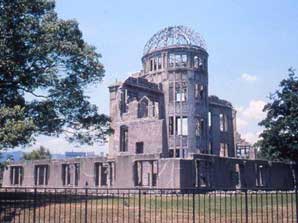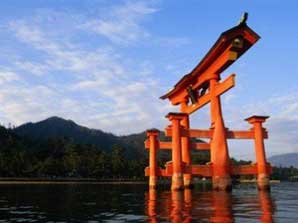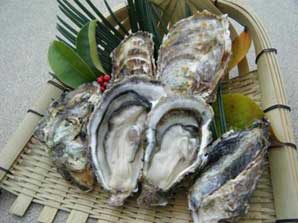Web Japan > Trends in Japan > Food & Travel > Hiroshima, Home to Two World Heritage Sites
Hiroshima, Home to Two World Heritage Sites
Local Specialties Include Oysters and Hiroshima-Style Okonomiyaki
Hiroshima Prefecture faces the scenic Seto Inland Sea to the south and embraces the picturesque peaks and valleys of the Chugoku Mountain Range to the north. Boasting a long history and rich culture, the region is home to two World Heritage sites: the Atomic Bomb Dome, which stands as a symbol of the first city to suffer the dropping of an atomic bomb, and the historic Itsukushima Shrine. In addition to following the path of history from ancient to modern times, the opportunity to taste popular local specialties like oysters and Hiroshima-style okonomiyaki (savory pancakes with fried noodles and cabbage) should not be missed!
The Footprints of HistorySituated in the southwest part of the prefecture on the Seto Inland Sea, the city of Hiroshima is home to approximately 1 million people. Traversed by a number of rivers, Hiroshima is known as a picturesque water city. Many locals get around on the city's famous streetcars, which are also convenient for sightseeing.
The most famous landmark in Hiroshima is the Atomic Bomb Dome, which was inscribed on the World Heritage List in 1996. On August 6, 1945, the world's first atomic bomb was dropped and exploded almost directly above the site of the dome, destroying the city in an instant. Remarkably, the dome remained standing. Throughout the city's postwar recovery it has been carefully preserved by the citizens of Hiroshima as a visual reminder of the calamities of the atomic bombing.
Other facilities, including the Peace Memorial Museum, the cenotaph, and many other monuments, have been erected in the Peace Memorial Park that is home to the Atomic Bomb Dome. These monuments, which eloquently convey the tragedy of the destruction in Hiroshima, are a symbol to the world of the importance of eliminating nuclear weapons and establishing lasting peace.
A 15-minute walk from the Peace Memorial Park is Hiroshima Castle. Originally built in 1589, the tower was reconstructed in 1958 and now houses a history museum, offering spectacular views of the city from the top floor.
Majestic Sanctuary in the Sea A short train and ferry ride out of the city brings you to the small island of Miyajima, in the Seto Inland Sea. Miyajima is home to the World Heritage Site of Itsukushima Shrine.
Said to have been constructed in 593, Itsukushima Shrine has been known as a spiritual sanctuary of the region since ancient times. In the twelfth century, Taira-no-Kiyomori, one of the most influential leaders in Japan at that time, constructed the impressive main shrine building in an architectural style representative of the Heian period.
Itsukushima Shrine was built on the water's edge with the island's highest peak, Mt. Misen, in the background. The shrine's vermillion-lacquered Otorii (large shrine gate) stands in the sea just offshore. The majestic scene at high tide when the shrine and its surroundings look like a floating palace continues to enchant visitors.
Large areas of virgin forest remain on and around Mt. Misen as a result of a long-standing ban on cutting down trees on what is considered to be sacred ground. Walking around the island, visitors may also catch glimpses of deer, which are protected as messengers of the gods.
Hiroshima DelicaciesIdeally situated on the edge of the peaceful Seto Inland Sea, Hiroshima has a well-developed fishing industry. Oysters have been cultivated in the region for around 450 years, and the prefecture retains the distinction of being the country's top producer. In addition to being eaten raw, oysters are also enjoyed grilled, fried, or in a hotpot.
A favorite home-style dish is Hiroshima-style okonomiyaki. In the Kansai region the main ingredients, which include flour, shredded cabbage and eggs, are mixed together and then poured out onto a griddle like a pancake. In Hiroshima, however, the batter is first spread out like a crepe and the shredded cabbage and meat are laid on top, and it is then turned over to cook the fillings by steaming. Next it is placed on top of some fried noodles, and then the whole thing is put on top of a frying egg, flipped over a final time and brushed with a salty-sweet sauce as the finishing touch. Cheap but tasty okonomiyaki outlets can be found in every part of the city.
Momiji manju, steamed buns made in the shape of Japanese maple leaves, are a famous souvenir of Miyajima. Usually manju are filled with sweet bean paste, but recently other fillings, such as chocolate, have become popular, allowing people to enjoy a variety of taste combinations. (February 2010)
- Kumamoto, Famed for Its Castle and Caldera (July 2009)
- Nikko, City of History and Nature (March 2009)




